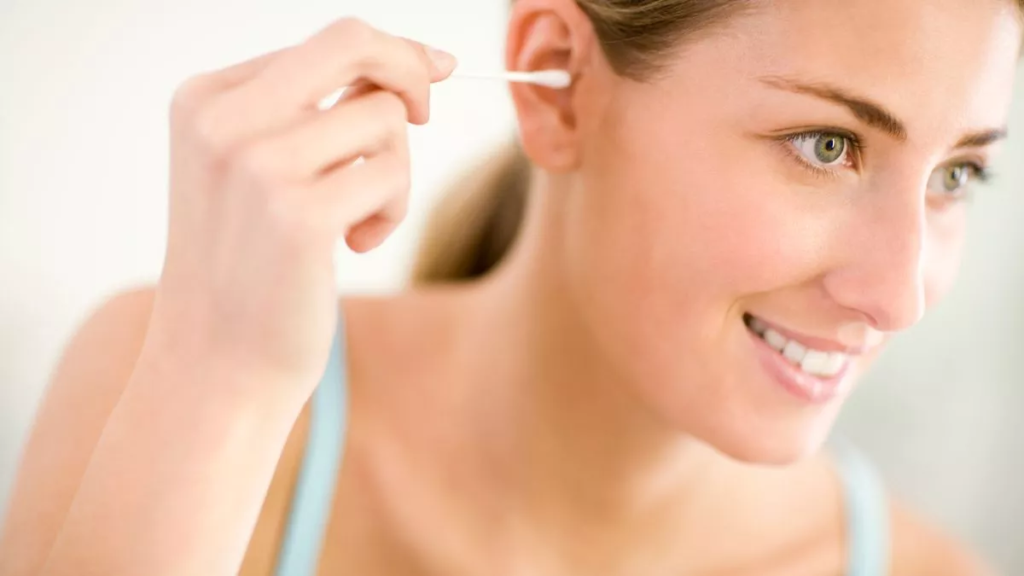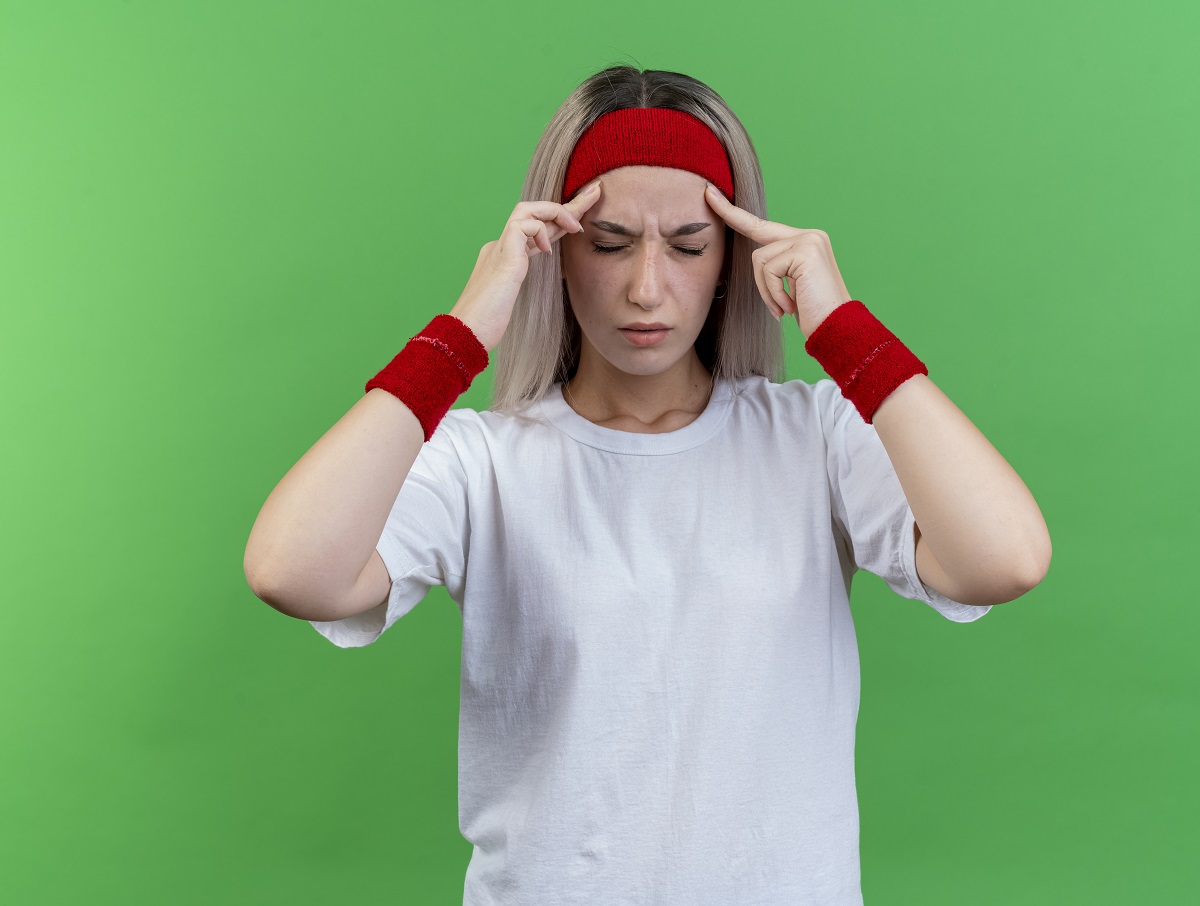Cerumen impaction, or simply an earwax blockage, is likely already familiar to you if you’ve ever experienced painful ear fullness or decreased hearing. Overproduction of earwax might result in a bothersome obstruction. If you frequently get earwax blockages, you’re undoubtedly looking for simple at-home earwax removal techniques. You can get rid of any extra earwax quickly and securely. However, there are some choices you should stay away from. Let’s look at some safe earwax removal home remedies.
What is Earwax?
The substance called cerumen, or earwax, is something the body naturally produces regularly. Inside the ear, skin cells are always dividing to produce new, healthy skin. However, there isn’t much space for dead cells to migrate in the ear canal compared to other body parts’ skin. Therefore, glands within the ear produce an oleum substance to aid in the trapping of dead skin cells and prevent them from obstructing the ear. It produces earwax. Actually, earwax is quite beneficial since it keeps the ears moisturized. By preventing germs, fungi, and other materials from getting within the inner regions of the ears, it also shields the ears. However, there may be an issue if the wax begins to accumulate. An ear infection may occasionally result from excessive wax buildup, along with discomfort and transient hearing loss.
What Earwax Blockage Can Cause?
Typically, when a person lifts their jaw, earwax comes out of the ear. Since it occurs gradually, you normally don’t realize it. However, earwax can remain in the ear for an extended time and become hard and dry when it doesn’t function as it should. This results in earwax impaction, often known as trapped earwax. The risk of earwax impactions is higher in children and elderly people. But everyone can experience it.
A case of stuck earwax may manifest as;
- Distorted auditory perception
- Ear ringing
- Discomfort or heaviness in the ears
- Itching
How To Safely Remove Ear Wax?
If you frequently get ear wax impactions, you should definitely know a few tricks for doing quick and simple at-home earwax removal. This can be done at home with safely removing earwax techniques. Treatments for earwax that can be used at home include sprays, drops, and irrigation solutions. Irrigation using ear drops shouldn’t ever hurt. Should you attempt these DIY earwax removal solutions and encounter discomfort, get in touch with your physician right once.
How do you remove ear wax at home?
A blockage of earwax can be removed at home in a few different ways, such as:
Hydrogen Peroxide
Adding a few drops of hydrogen peroxide to a damp cotton ball and applying it to the afflicted ear is a popular technique for removing earwax. One popular antiseptic from a reliable source is hydrogen peroxide. Another option is to drip the fluid into the ear canal using a sterile eyedropper. For many minutes, the head must be tilted so that the afflicted ear is pointed upward. In order to reach the obstruction, this will enable the liquid to trickle down into the ear canal. Once the ear canal is free, tilting the head in the other direction will let the fluid and earwax drain. This process should take a few minutes. According to one study, hydrogen peroxide should be applied to earwax approximately half an hour before ear irrigationTrusted Source.
The earwax may become more pliable as a result of the solution, making water irrigation removal easier. When utilizing hydrogen peroxide drops or pure solutions, one should proceed with considerable caution. At low quantities, hydrogen peroxide can irritate skin and is commonly present in easily accessible home goods. It can burn skin when applied in quantities of 10% or more. If irritation develops, the user should stop using the product and consult their doctor if their symptoms worsen. Hydrogen peroxide should only be used by someone whose eardrum is still intact. It will hurt if it is perforated or if someone has had ear tubes put in.
Rubber-ball Syringe
Using a rubber ball syringe filled with warm water is a comparable technique. The injured ear should be pointed upward when using the syringe to gently trickle warm water into the ear canal. It’s imperative to refrain from pushing water into the ear canal with force because this can make you feel lightheaded. It can’t be too hot or too chilly in the water. The patient should turn their head in the other direction after a minute to allow the liquid and earwax to drain out. To help the water flow out, they might discover that pressing up slightly on their ear helps. This method might need to be repeated several times. This approach should not be used by anyone who has an ear injury, such as an eardrum rupture. Those who acquire swimmer’s ear frequently shouldn’t utilize this technique.
Ear Dropping
To cure an ear wax obstruction, ear drops can be bought online or over-the-counter (OTC). These typically consist of oil- or water-based treatments that soften earwax. They frequently include carbamide peroxide, a substance that is comparable to hydrogen peroxide. People should use over-the-counter medications according to the directions on the packaging. Until the ear canal is clear, they will often need to apply five to ten drops of the solution twice a day for a few days. One may need to flush or irrigate the ear with warm water and a rubber syringe in addition to the ear drops treatment if the earwax is not entirely removed. A person should consult their doctor if the issue doesn’t go away after four days.
Some Other Remedies for Earwax Blockage
It is also possible to apply additional compounds with an eyedropper. A 2018 article states that the following additional products may also be effective at clearing wax:
- Saline almond
- Arachis
- Rectified camphor oil for babies
- Mineral
- Almond oil
- Sodium bicarbonate
- Glycerin
- Acetic acid
- Cotton-tipped swabs
- Olive oil sprays
- Drops
Once more, the affected ear should be looking upward while applying one or two drops. After waiting a few minutes, tilting the head the other direction will allow the fluid to drain out. Like other treatments, none of them should be inserted into the ear unless the eardrum is intact and the doctor has authorized the procedure.
Which Products Are Unsafe to Remove Earwax at Home?
Avoid attempting to remove your earwax using cotton-tipped swabs (such as Q-Tips) or other tools. When attempting to remove earwax, many people damage or rupture their eardrums. Moreover, earwax may be forced farther into your ear canal by these objects, making removal more difficult. Deeper earwax also has a higher chance of touching your eardrum, which can hurt and alter your hearing. This advice is also provided by the American Academy of Otolaryngology-Head and Neck Surgery: If there is no earwax present, do not attempt to remove it. Because earwax is protective, removing it too often may cause other issues, such infection.
In the future, this may even make an ear clog more likely. Ear candles should not be used since they can harm the eardrum or ear canal. See your healthcare practitioner for earwax removal if you have ever had ear surgery or trauma. You shouldn’t attempt to remove your wax at home since you could bleed or become sick.
Using an Earwax Removal Kit
The active chemicals and the specific device utilized can cause modest variations in earwax removal kits or irrigation systems. Before using the kit, a person should read the instructions on the box and consult their physician. According to a 2021 article, a person will usually follow these procedures to clean their earwax utilizing irrigation or a home kit system. Select a chair that is comfortable for the individual to sit in, tilt their head to the side, and insert a few drops of hydrogen peroxide, saline, warm water, or the kit’s supplied solution into their ear.
After that, they ought to sit for fifteen to thirty minutes with their heads tipped to the side. The person should use the supplied tool to flush the ear wax out of the ear or suction the solution into the bulb once the solution has soaked into the earwax. After they’re done, they should dry the surrounding area. A person should consult their doctor right away if any problems arise.
Signs and Symptoms
A transient hearing issue or hearing loss is the most typical sign of earwax blockages, according to reliable sources. While this could be concerning, if the obstruction is removed, normal hearing should resume.
Additional signs and symptoms could be:
- Ear discomfort
- Fullness in the ear
- Dizziness
- Tinnitus
- Ringing in the ears
Preventions For Safely Removing Earwax At Home
Following preventions you should keep in mind for safely removing earwax:
- In an attempt to clean the ear, sticking cotton buds or other things inside might actually exacerbate or create an earwax obstruction. This occurs as a result of the objects forcing earwax deeper into the ear canal.
- One should refrain from putting anything in their ears to prevent earwax obstructions. Though it may feel uncomfortable, cleaning is typically not required for ear wax. Since the ears clean themselves, most wax should be forced out.
- People can purchase over-the-counter ear drops as a safe solution if their bodies are overproducing earwax.
- A person can also avoid earwax blockages by softening their earwax by putting drops of a solution into their ears a few times a month. Online shoppers have access to a variety of products, such as:
- Hydrogen peroxide, mineral oil, and earwax removal drops
- Irrigating the ear regularly can help avoid earwax accumulation, but this is normally best reserved for addressing real blockages. Young children’s ears should never be irrigated without first consulting a doctor.
When to Visit a Doctor?
The majority of earwax obstructions are treatable at home. To remove earwax, it can be safer to see a doctor because the eardrum and canal are sensitive. Additionally, people should visit a doctor if they experience severe pain, bleeding, or drainage from the ear, as these symptoms could be signs of another problem. Make an appointment with a pediatrician if you are concerned that a young child may have affected cerumen. They can examine the child’s ears and provide recommendations for possible treatments. A physician may use specialized ear equipment to remove the obstruction. If symptoms don’t go away or worsen while receiving home treatment, a person might need to visit their doctor after a few days.
Wrap-up
The body needs earwax as a natural defense against bacteria, viruses, and other environmental pollutants that could harm the eardrum. But occasionally, having too much might accumulate and cause issues. Extra wax can easily be removed at home by softening the wax and irrigating the ear. However, if you experience any alarming symptoms, such as discomfort, leakage, or hearing loss, don’t wait to consult your doctor.
FAQs: Safe Earwax Removal Home Remedies
1. Is it safe to remove earwax at home?
Yes, for mild cases, safe earwax removal at home is possible. However, if you experience pain, ear bleeding, or frequent blockages, see a doctor.
2. What are some signs of earwax buildup?
Feeling clogged or full in your ear, muffled hearing, and tinnitus (ringing in the ear) are all potential signs of earwax buildup.
3. What home remedies can help remove earwax?
Olive oil, hydrogen peroxide (3%), and warm water irrigation are popular home remedies for earwax removal.
4. How do I use olive oil for earwax removal?
Warm olive oil softens earwax. Tilt your head and place a few drops in your ear. Repeat for a few days and flush with warm water.
5. How do I use hydrogen peroxide for earwax removal?
Use 3% hydrogen peroxide. Tilt your head, place a few drops in your ear, and let it fizz. Then, flush with warm water.
6. How do I safely irrigate my ear with warm water?
Use a bulb syringe filled with warm water. Gently squirt near the ear canal, not directly in it. Let the water drain naturally.
7. What should I avoid when removing earwax at home?
Never insert cotton swabs, bobby pins, or other objects into your ear canal. This can push wax deeper and damage your ear.
8. When should I see a doctor for earwax removal?
If home remedies don’t work, you experience pain, ear bleeding, or frequent blockages, consult a doctor for professional removal.
9. How can I prevent earwax buildup?
Avoid using cotton swabs in your ear canal. Let natural earwax production do its job and remove old wax.
10. Can I use earwax removal drops?
Over-the-counter earwax removal drops can be helpful. Choose ones with hydrogen peroxide or other wax-softening agents.






